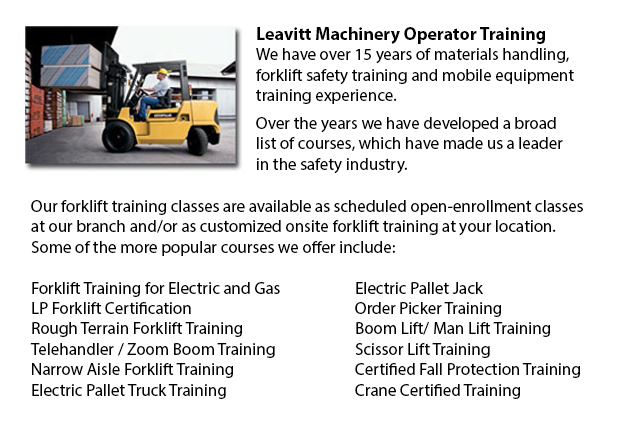
Hyster is globally renowned as an industry leader in the lift truck producing business. However, it began as a manufacturer of lifting equipment and winches. Most of its production was focused in the northwest United States and dealt primarily with the timber and logging industry. A couple years after the 1st forklift trucks were invented Hyster became synonymous with quality manufacturing. Over the preceding 80 years Hyster has continued to expand and grow its product line. The growth of its products coupled with its wish to stay service oriented has allowed Hyster to mature into the global participant it is nowadays.
Through the 3 decades between the 1940's and 1960's, Hyster made substantial strides on its path to becoming the global leader in the forklift industry it is nowadays. In 1946, Hyster opened a plant in Danville, Illinois that was completely devoted to mass producing trucks. This allowed Hyster to force its expenses down and, simultaneously, offer a better quality product at industry aggressive prices. In 1952, Hyster began its first foray in to the international production market through opening its first plant in the Netherlands. The Netherlands plant was originally designed to produce two products: Hyster 40" and the Karry Kranes.
The forever varying needs of Hyster clients and Hyster's ability to continue to innovate led to rapid expansion throughout the fifties and 60's. They started constructing container handlers in the United states in 1959 to meet with the ever growing demand for transportation goods. In 1966, Hyster developed a means for allowing a lift truck to go both forward and backwards using the same pedal. This pedal was termed the Monotrol pedal, which revolutionized the industry. Later in the decade Hyster opened a R and D centre in Oregon that was concentrated on improving the design and performance of lift trucks. The centre is still one of the world's top testing facilities in the materials handling industry.
In the 1960's Hyster experienced rapid expansion. Much of the industry was shifting towards bulk manufacturing. To keep up with the times Hyster was inclined to concentrate on the evolution of these mass markets. Accordingly, in 1970, the XL design philosophy was born. The XL design philosophy allowed Hyster to provide greater quality at a more inexpensive price. A further expansion in manufacturing capabilities was necessitated by the demand in Europe for Internal Combustion Engine Trucks. To plug this gap, a plant in Craigavon, Ireland was opened in 1980. Through the 1980's Hyster continued to concentrate on developing industry leading lift trucks. The Hyster brand name was known throughout the world for its dedication towards superiority. This attention to quality brought several suitors for the business. In 1989, a large multinational business based in Ohio called NACCO Industries purchased Hyster and started an aggressive growth plan. NACCO quickly replaced the XL philosophy with a more driver oriented truck that focused on operator comfort, which is identified as the XM generation of lift trucks.
The evolving requirements of Hyster's valued clientele, led by improvements in supply chain management, required Hyster to constantly innovate and invest in new manufacturing technologies throughout the next few decades. Acquisitions and investments were made in the United States, Italy, Netherlands, and a lot of other places throughout the globe. All of these investments have made Hyster a worldwide leader in the lift truck market. In 2009, Hyster celebrated its 80th anniversary as an industry leader of materials handling equipment, which comprises over 300 assorted styles of lift trucks.
-
Aerial Lifts
Aerial hoists can be utilized to accomplish certain distinctive tasks done in hard to reach aerial spaces. A few of the odd jobs associated with this type of jack include performing daily maintenance on buildings with prominent ceilings, repairing te... More -
Nissan Forklift
Nissan takes great pleasure in achieving complete consumer satisfaction, when their client is experiencing one of their numerous products including cars, trucks, and forklifts. Nissan Motor Co. Ltd is the parent company to Nissan's Forklift division.... More -
Boom Trucks
A boom truck is frequently recognized by the cable and telephone company vans that have the extended arm folded over their roofs. Commonly, a bucket-like equipment sits at the extension of extendable arms. Sometimes labeled a cherry picker, or an aer... More -
Scissor Lifts
The scissor lift or table lift, is a mechanical industrial lift that has been customized to be utilized in retail, wholesale, manufacturing and production environments. Industrialized scissor lifts have been used predominantly within production and m... More -
Crown Forklift
More

Forklift Training Vernon
TOLL FREE: 1-888-254-6157
Vernon, British Columbia
forklifttrainingvernon.com
Email Us
About Us


